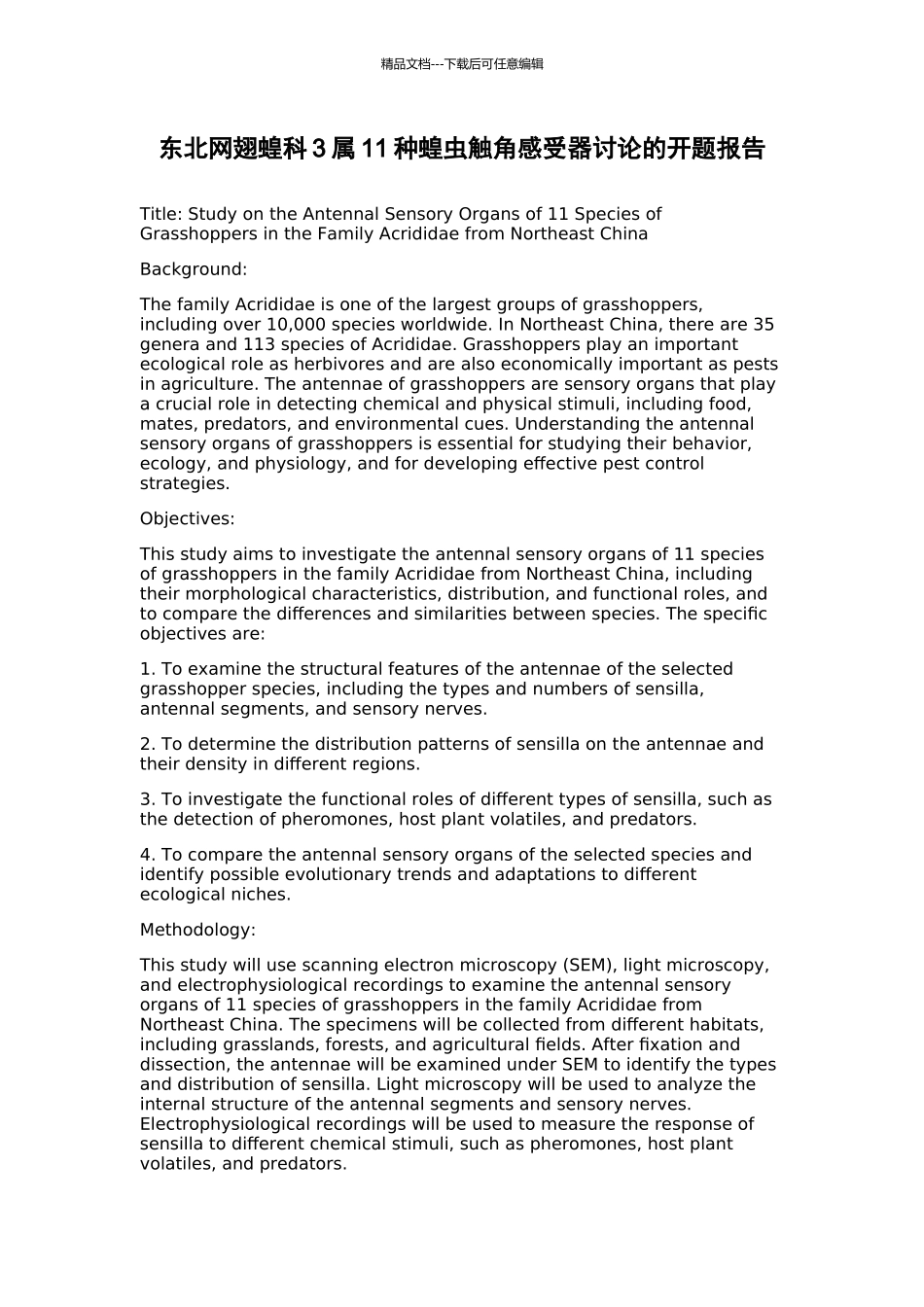精品文档---下载后可任意编辑东北网翅蝗科 3 属 11 种蝗虫触角感受器讨论的开题报告Title: Study on the Antennal Sensory Organs of 11 Species of Grasshoppers in the Family Acrididae from Northeast ChinaBackground:The family Acrididae is one of the largest groups of grasshoppers, including over 10,000 species worldwide. In Northeast China, there are 35 genera and 113 species of Acrididae. Grasshoppers play an important ecological role as herbivores and are also economically important as pests in agriculture. The antennae of grasshoppers are sensory organs that play a crucial role in detecting chemical and physical stimuli, including food, mates, predators, and environmental cues. Understanding the antennal sensory organs of grasshoppers is essential for studying their behavior, ecology, and physiology, and for developing effective pest control strategies.Objectives:This study aims to investigate the antennal sensory organs of 11 species of grasshoppers in the family Acrididae from Northeast China, including their morphological characteristics, distribution, and functional roles, and to compare the differences and similarities between species. The specific objectives are:1. To examine the structural features of the antennae of the selected grasshopper species, including the types and numbers of sensilla, antennal segments, and sensory nerves.2. To determine the distribution patterns of sensilla on the antennae and their density in different regions.3. To investigate the functional roles of different types of sensilla, such as the detection of pheromones, host plant volatiles, and predators.4. To compare the antennal sensory organs of the selected species and identify possible evolutionary trends and adaptations to different ecological niches.Methodology:This study will use scanning electron microscopy (SEM), light microscopy, and electrophysiological recordings to examine the antennal sensory organs of 11 species of grasshoppers in the family Acrididae from Northeast China. The specimens will be collected from different habitats, including grasslands, forests, and agricultural fields. After fixation and dissection, the antennae will be examined under SEM to identify the types and distribution of sensilla. Light microscopy will be used to analyze the internal structure of the antennal segments and sensory nerves. Electrophysiological recordings will be used to measure the response of sensilla to different chemical stimuli, such as pheromones, host plant volatiles, and predators.精品文档---下载后可任意编辑Expected Results:This study is expected to provide new insights into the morphological, functional, and evolutionary aspects of the antennal sensory organs of grasshoppers in the family Acrididae from Northeast China. The results may have practical applications in the development of pest management strategies for agricultural and environmental protection.

